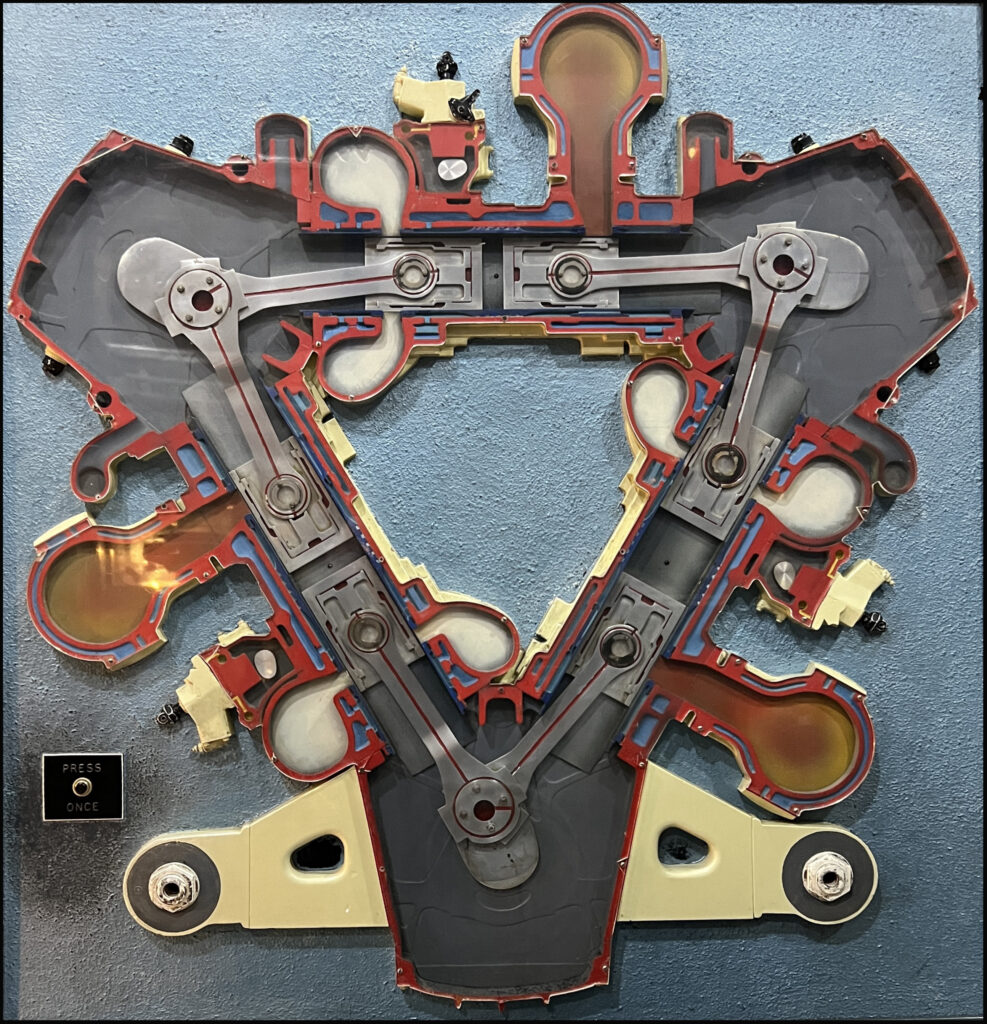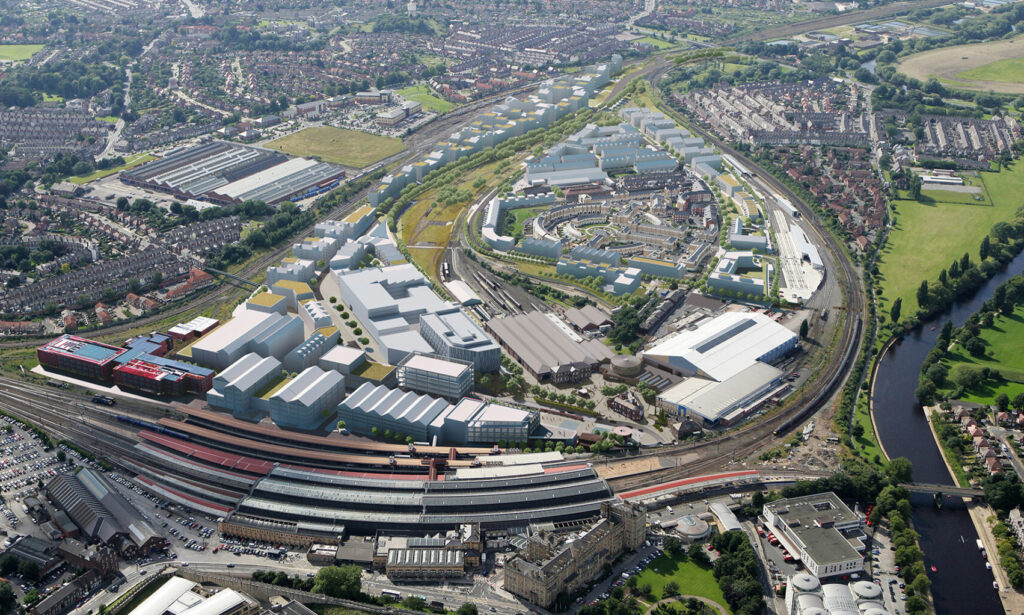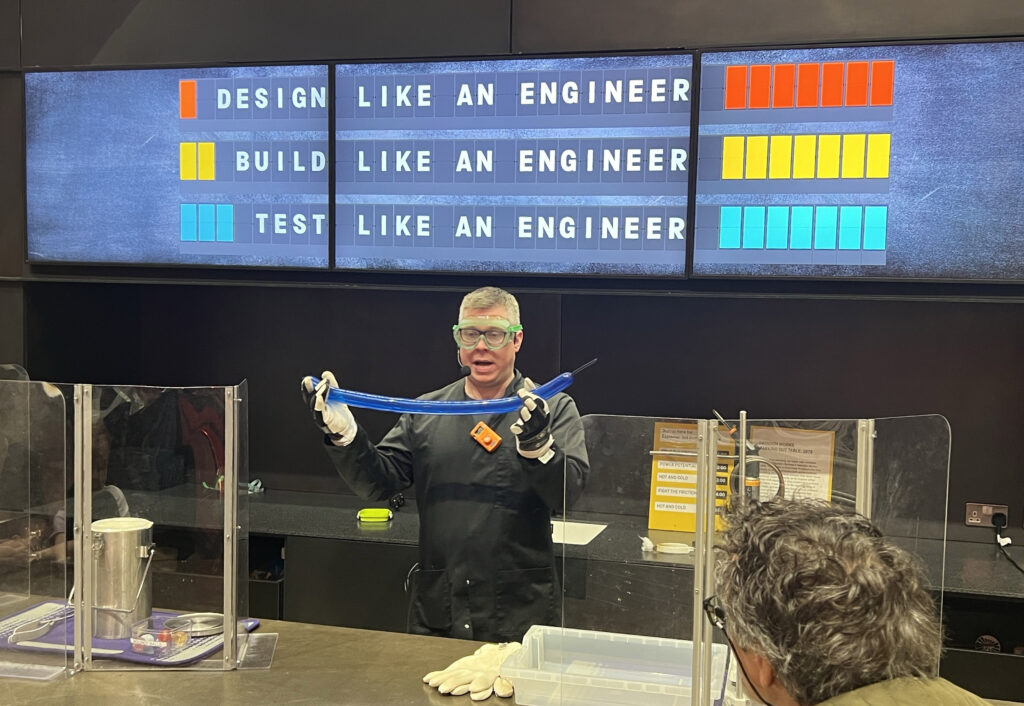Railway engineers looking at the exhibits in the National Railway Museum (NRM) at York must surely be impressed by their predecessors’ achievements. An example is the museum’s 98-tonne Merchant Navy class steam locomotive which was built in 1949. This is sectioned to reveal how Britain’s last steam locomotives were designed to maximise their thermal efficiency and get the maximum power from their superheated steam.
A further example is the cross-sectional working model of a Deltic diesel engine showing its compact design. This shows how two of these engines could be fitted inside a Deltic diesel locomotive to give it a power output of 3,300hp. One of the museum’s star exhibits, its A4 class locomotive, Mallard, achieved the world record speed of 126mph for a steam locomotive in 1938, though after it did so it had to be sent to a workshop to repair an overheated big end bearing.
The UK certainly has an impressive railway engineering heritage in which there is great interest. The NRM attracts over 650,000 visitors each year whilst heritage railways have over 10 million visitors a year. Yet today’s railway engineering is much more impressive than the museum’s exhibits.
Railway engineering today
The speed of Mallard’s one-off record breaking run is now commonplace with most long-distance passenger trains running at 125mph. Today’s railways are a complex system in which trains, track, signalling, telecoms, and electrification systems have evolved together to form a highly efficient, high-capacity transport system which offers significant benefits because:

Loads are efficiently distributed – typically a maximum dynamic wheel force of 350 kN gives a rail head pressure of 2.8 kN/mm which is progressively reduced through the rails, sleepers, and ballast to 0.5 N/mm.
Low resistance to motion – the rolling resistance of steel wheels on steel rails is about 0.1% of the weight of the train compared with about 1% for car tyres on a road. At speed, close coupled railway vehicles have a lower aerodynamic resistance to motion than the same number of individual vehicles.
High passenger and freight capacity – coupling many vehicles together offers high freight and passenger capacity. HS2 is designed for 18 trains an hour, each with 1,100 seats (i.e. 20,000 passengers per hour). A much wider three-lane motorway carries around 6,000 people per hour.
Collecting electricity on the move – as part of a guided system, electric trains can receive megawatts of power as it is generated. Hence electric trains are powerful and highly efficient as they do not need to store or convert energy.
Connectivity – new railways connect into the existing railway network to offer far more journey opportunities than those on the new form of guided land transport.
Today’s railway requires a complex interaction between different railway systems. Maintaining and enhancing such systems is a challenging and satisfying job. Yet the engineering of today’s railway is not that obvious, and, for many, today’s trains are just boxes on wheels. With the industry facing a significant challenge in developing and maintaining a skilled workforce that can keep pace with rapid technological changes, there is an urgent need to attract engineers. To do so, there is a need to demonstrate that railway engineering offers an interesting and rewarding career. Hence it is important to explain what railway engineering entails.
In addition to its exhibits the NRM is doing this with its recently opened ‘Wonderlab: The Bramall Gallery’ and it has a new gallery under construction. To learn more, Rail Engineer was glad of the opportunity to visit the museum to talk to Rob Scargill, lead curator of the planned Railway Futures gallery.
York’s railway museum
The NRM in York has the largest collection of railway objects in the world which includes over 260 locomotives. It currently attracts more than 650,000 visitors per year despite the ongoing construction work to deliver the masterplan. It was established on its present site, the former York locomotive depot, in 1975. It also operates the Locomotion railway museum in Shildon which has another 120,000 visitors a year. This opened in 2004 and is part of the Science Museum Group.

In 2018, the NRM announced its masterplan designed to increase its visitor numbers by 50%. This will unify the two halves of the museum as Leeman Road, which previously split the museum, is to be diverted as part of the York Central plans. The regeneration of the museum in this way is made possible by the development of the York Central site. This is a partnership between the NRM, Network Rail, Homes England, and York City Council which will provide up to 2,500 homes and 120,000-square-metres of office, leisure, and retail space.
The museum’s masterplan includes a new Central Hall, a Futures Gallery, an interactive Wonderlab experience for families, redevelopment of the Station Hall which was originally York’s main goods station, and a new 2,000-square-metre hall at the Locomotion museum. This will house 47 additional rail vehicles. The NRM considers that this site will then be the world’s largest collection of historic railway vehicles under cover. This new hall will be the hub of celebrations to mark the 200th anniversary of the opening of the Stockton & Darlington Railway in 2025.
As environmental sustainability is an important aspect of the masterplan, there is a site-wide masterplan for energy and carbon reduction. This includes improved insulation, particularly for the Station Hall where the roof is to be replaced with one with much improved insulation. New buildings will have mixed mode ventilation giving natural ventilation in summer and mechanical ventilation with heat recovery in the winter. Elsewhere, more efficient heating systems are being installed.
Around £95 million will be invested to deliver the NRM’s masterplan and associated works to transform its museums at York and Shildon. This is made up of Government funding, Durham County Council funding, surplus museum land sales, industry contributions, and campaign funding. In March, it was announced that the masterplan is to receive a £15 million contribution from the Government’s Levelling Up Fund. This follows a contribution of £18.6 million in 2019 from the Government’s Cultural Investment Fund.
Wonderlab
July 2023 saw the opening of first part of the master plan, Wonderlab: The Bramall Gallery, after five years in development. This is a purpose-built gallery aimed at children aged 7-14 to inspire them to get hands-on experience of solving engineering challenges to inspire the next generation of rail engineers. It is based on similar Science Museum Group interactive galleries at its Bradford and London museums.

At its opening, NRM’s director Judith McNicol said: “We want to ensure that children have great fun while developing a spark of interest in engineering that will contribute towards tackling the UK’s shortage in STEM skills.”
Wonderlab has 18 hands-on interactive exhibits which aim to encourage children to think like engineers and develop skills as they design, build and test to produce different outcomes. This includes a sandpit on which a landscape with railways lines was projected for which children can make cuttings and embankments, and includes a wind tunnel showing smoke trails over different shapes. Your writer managed to build a bridge with loose blocks and saw a thermal imaging camera show a heated brake disc when he applied the brake.
It also has regular demonstrations. One of these showed how carefully mixing fuel, oxygen, and heat can create explosions to power an engine.
Railway Futures Gallery
An important part of the museum’s masterplan is a new gallery adjacent to the new Central Hall which will encourage visitors to consider the role of railways in tomorrow’s transport systems. It won’t predict the future but will encourage visitors to imagine it by asking what they want the future railway to look like. The gallery will encourage visitors to imagine what future departures, journeys, and destinations will look like, and also showcase railway developments outside the UK.
Hence this will stimulate questions such as how journeys will be planned and started; how many passengers and goods travel in the future; what will be the passenger experience; how passenger and freight trains will be powered and maintained; what future train stations will be like; how people will travel to and from stations, and whether there will be better integrated transport.
The gallery will show rail’s extensive impact today and ask visitors to consider its future impact. To do so, visitors will be requested to consider challenges of the future such as the climate crisis, global inequality and energy supplies, as well as timeless railway challenges such as adhesion and capacity. How the railway can help deliver desirable futures will also be considered.
For example, some may worry about the cost of heating for which a railway solution in London is using waste heat from tube trains to provide heating and hot water to more than 1,350 homes, a school, and two leisure centres in Islington. Parents want their children to have exciting meaningful jobs and may not be aware of the need for people with diverse skillsets needed for the many roles that visitors might not associate with railways.

In 2022, Porterbrook announced that it would be supporting the new Railway Futures Gallery with a £2.5 million sponsorship agreement which builds on its decade-long relationship with the NRM. In recognition of this commitment this gallery is now known as ‘Railway Futures: The Porterbrook Gallery’.
A masterplan to inspire
In a recent blog, Judith McNicol notes that the invention of the railways was something Britain did for the world. She sees the museum’s masterplan as an opportunity to ensure that the museum is a place for people to engage and get excited by posing questions about the future: What does engineering need to look like and what are its opportunities? What, for a young person, could those opportunities look like?
She feels the museum’s masterplan will inspire “through using the past, homing in on the innovations that have changed the world as a springboard to look at what’s happening today, and the challenges of the future, particularly the sustainability credentials that the railways can deliver in terms of mass transport.”
Though it is natural to reflect on past railway engineering achievements when visiting the museum, it is important to understand how the past can be used to inspire the future. In this respect, the NRM is to be commended for its aim to capture the hearts and minds of the next generation of railway engineers.
Lead image credit: National Railway Museum

